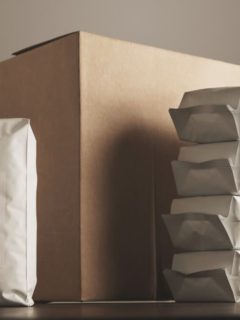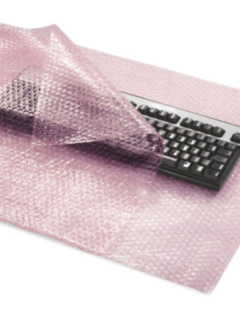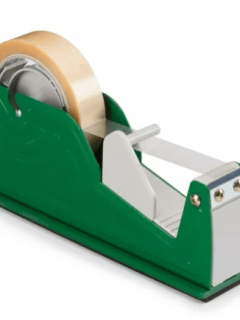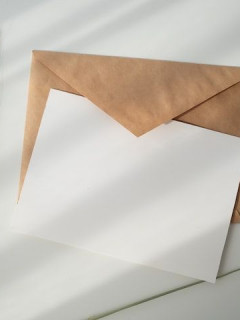The popularity of stretch film in many industries continues unabated. It is used in the logistics, transport and food sectors, as well as in horticulture, agriculture, beauty and hairdressing salons. It will even work well in the office or household. The main choice you face is the type and colours of stretch film. Not everyone is aware that the colour of this accessory affects its functional properties. Which stretch film should you choose?
What exactly is stretch film?
Stretch film is a characteristic cellophane, produced from plastics (polyethylene, polypropylene), through the method of machine casting or blowing. The method of production has a major impact on the properties of stretch film. The blow moulding method produces a stronger stretch film of higher quality. Due to the longer production time, such a product is also more expensive. The machine infusion method results in a very stretchy cellophane, which also has an impact on damage resistance.
General properties of stretch film
Stretch film is very inexpensive, convenient to use, flexible, durable and resistant to adverse weather conditions, moisture, dirt. It has heat-insulating properties. Does not allow odours to penetrate. It protects the interior from extreme temperatures. Stretch film can be stretched by up to 250% (much depends on production method and type). It is characterised by its high clinging power – it holds firmly to the contents it has wrapped. When it comes into contact with high temperatures, it shrinks, which results in a tighter and more precise adhesion to the object. Under the right conditions, it can return to its original shape.
Features of stretch film. Colours of stretch film
Stretch film is light, flexible, heat-shrinkable and waterproof. It is characterised by its strength and high adhesion. The more layers of this accessory are applied to the load, the greater its stability. As for the colours of the stretch film, we are most often faced with black, transparent, coloured. At RAJA you will find all of these types.
What are the characteristics of transparent stretch film?
Transparent (colourless, transparent) stretch film has many advantages. First of all, it allows us to recognise and check the contents of the parcel without unpacking it. Just like other foils, it is an effective barrier against dust, moisture and other external factors.
It can be used in almost all industries. In a hairdressing salon, for example, it can be used to dye hair and in agriculture to protect tree trunks from pests.
What is worth knowing about black stretch film?
Black stretch film is the most popular product of its type. It is most often used in the transport and shipping industry. By wrapping a parcel or a pallet with it, you can be sure that outsiders will not recognise its contents. This is particularly important in the case of expensive, valuable goods such as white and brown goods. This reduces the risk of theft – what the eye cannot see, the heart cannot feel sorry for. Remember that black stretch film is ideal for packing parcels and pallets.
Features of coloured stretch film
Opaque stretch film can have colours other than black, such as pink, red, blue, yellow, green, white. Due to the presence of the dye, such products show very high protection against sunlight. However, the main purpose of coloured stretch films is analogous to that of black. They make it possible to protect a pallet or shipment from the sight of unwanted people. They therefore often protect confidential consignments.
Coloured stretch films also help warehouse and sorting staff. Thanks to them, individual goods can be divided according to e.g. further destination, manufacturer. Employees will therefore be able to identify consignments more easily at a later date.
Another division of stretch film. Which stretch foil to choose?
Stretch films can also be divided into different types in terms of destination. Thus, we are dealing with:
- Stretchfilm for manual packaging – e.g. of loads on pallets. A single roll accommodates – more or less – a shipment of 150-250 m in length and weighs (with coil) from 1.7 to 2.7 kg. As you can guess, it is used in the transport industry. Most often we have a choice of black and clear versions. Another sub-type is pre-stretch film, which does not stretch as much during application, thus stabilising the given parcel, cargo even better. Manual stretch film is the most frequently selected type of film.
- Stretch film for machine wrapping – it is used for wrapping parcels and other goods, placed on pallets, with the use of special wrapping machines (mainly pallet wrappers). It is characterised by its high stretchability and can therefore be used for, among other things, warp-resistant products. It is most often used by companies that protect a large number of goods on a daily basis – a more economical choice than manual stretch films.
- jumbo type stretch film – it is used for further processing (packaging) into hand film. It has great stretchability (even up to 100%) and a thickness of 10-40 micrometres.
Applications of stretch film
Wondering what are the uses and types of stretch film in specific sectors? Stretch film will come in handy in the transport sector, food industry, construction, agriculture, beauty salons and hairdressers, among others. Transport is the most popular sector in which stretch film of various colours is used. It makes it possible to protect pallets and shipments from shifting, falling apart. It protects the contents from moisture, dirt, dust and sunlight.
Agriculture
As far asthe agricultural sector is concerned, transparent stretch film is used more frequently here. It has properties conducive to plant growth (such as thermal insulation) – by letting the sun’s rays through, it retains moisture and heat underneath. This accelerates the growth of flowers, shrubs etc. In winter, it can be used to protect plants from frost. With it, the growth of weeds around certain plants can be reduced.
Construction
Construction is another sector where stretch film is worth using. It helps with renovation work, e.g. by protecting window and door openings, furniture and flooring. It protects the contents from moisture, dust and dirt. You don’t have to worry about a piece of furniture or the floor being stained with paint.
Cosmetology
Stretch film also plays a significant role in hairdressing and beauty salons – not everyone is aware of this. First of all, it can be used to protect clothing from dyed hair. Stretch film is used in anti-cellulite, slimming and skin firming treatments. How exactly does it work at these times? It accelerates the sweating process, which has the effect of cleansing the body of toxins, as well as protecting it from the sun’s rays and bacteria. Stretch wrap is suitable for body wrapping (so-called foiling, a slimming treatment) – during the treatment, it speeds up blood circulation and opens the pores, which helps to speed up the absorption of active substances.














